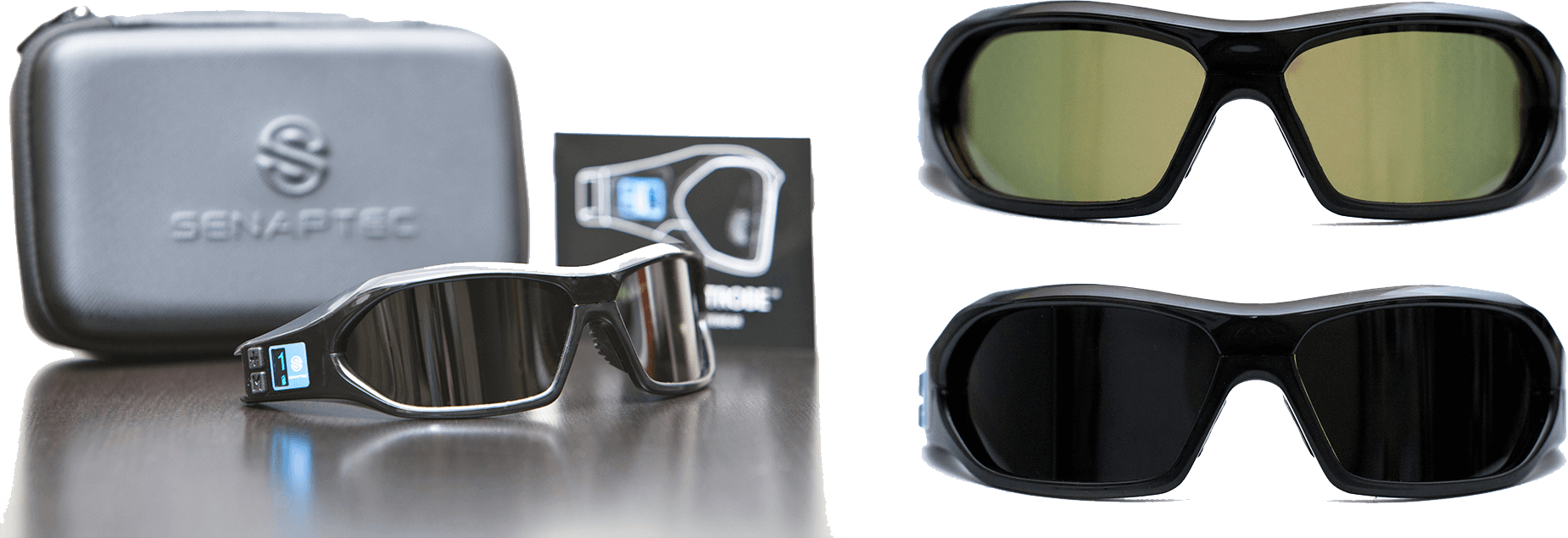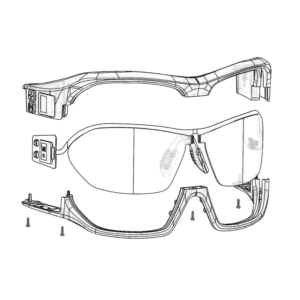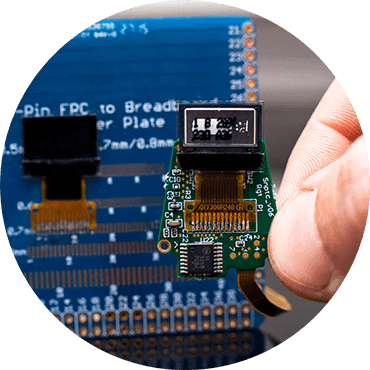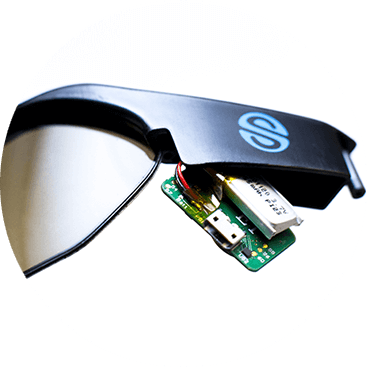Case Study: Senaptec Strobe Eyewear
Simplification goes a long way when it leads to reducing manufacturing costs by 35%
The Challenge
Senaptec, a company that provides state-of-the-art sensory technologies and products, had a great idea, but was in need of product development. They had made a pair of strobing eyewear based on proven, licensed technology that allows athletes in sports like basketball and baseball to train their brains to respond faster to stimuli. During training activities, the athlete wears the eyewear, which has flickering lenses to limit vision. It is much harder to catch a ball while wearing the strobing eyewear. This added degree of difficulty hones an athlete’s abilities, and their performance without the eyewear (such as in a competition) is generally improved.
The science behind how stroboscopic training enhances anticipatory timing was sound, but the prototype was a very early version that was not meeting the performance, manufacturing, or cost goals, so Senaptec approached Simplexity with their prototype.
Simplexity’s scope of work included a full ground-up redesign of the product, while maintaining the overall look, size, and shape of the eyewear. The device needed to be streamlined, more robust, simpler, have more features, and be cheaper to manufacture. Applying a wealth of design-for-manufacturing experience with a new Bluetooth Low Energy (BLE) module, Simplexity engineers architected a product that could do more for less and meet the vision of the Senaptec team.
The Solution
We wanted to make the design both effective and elegant, so simplification was our priority with this design. The architecture began with building blocks to successfully accomplish the product specifications. From there, the design was streamlined. We combined items that could be unified, eliminated elements that could be removed, and restarted the design from the beginning with the end in mind.
This minimalist approach provided more room in the COGS for higher quality parts, more space on the PCA for better tech, and less time to get the product through to production. We combined the electronics into a single composite flex circuit, reduced the mechanical part count by almost half, and then integrated accommodations for a more effective lens technology.
“It's nice to communicate, oh by the way you have this problem. It's even better to communicate, by the way in about a month you might have this problem and so you should be thinking ahead now how you're going to want to solve that so we don't waste any time in design or rework. They're always looking ahead and it's super helpful.”
-Joe Bingold,
Co Founder and CEO of SENAPTEC
Mechanical Engineering
The original concept for this product made sense in CAD, but the assembly of the prototype was difficult. It required flex lamination, PCA-to-flex assembly, liquid gasket material for flex sealing interfaces, extraneous mounting features, molding undercuts, etc. When evaluated, it was clear there were major gains to be made by applying creative problem-solving tactics in the mechanical design.
The electronics needed more features. The lenses needed more clearance. Our problem became how to get more space in the same area for supporting components. Combining parts with better molding techniques made big gains in reducing part count, improving ease of assembly, and maximizing internal volume. Better part breakup and parting line selection made molding easier and improved part mating, eliminating at least some of the need for sealing. Our engineers worked closely with our pre-certified molding vendors to get DFM involved early for better features, material selection, and part breakup. Ultimately, we gave the device more room for lenses, a longer lasting battery, and more powerful electronic components with minimal impact on the industrial design and ergonomics.
Electrical Engineering
Our iterative design approach from first prototypes to alpha units to production made it possible to balance function and ease of assembly for mechanical and electrical components. Before starting the first prototype, we used low-cost development kits to prove out the operation of the lenses. For production, we decided to use a rigid flex assembly in order to streamline assembly and reduce the need for bulky and expensive connectors. Looking toward future uses of the product, we chose a microcontroller that was on a BLE module so remote control of the device's modes could be added later.
The battery was a critical component in this device. We looked overseas to source a lithium ion battery of the right shape and capacity. Testing of the device’s current draw during the first prototype confirmed the capacity met requirements for time between charging, and current draw during power down was minimized to allow long storage times between uses.
Firmware Engineering
Understanding the initial requirements as well as future requirements for the eyewear led us to select an appropriate BLE module as our development platform. Although wireless capability was not an initial requirement, it was on the roadmap for a future upgrade. Starting with a BLE module meant not having to rewrite existing code for a new electronics platform when it was time to support wireless operation, and allowed for an in-the-field upgrade to add the new functionality once available.
Choosing an electronics platform that was well-supported by a high-quality supplier allowed our firmware development to proceed smoothly throughout the project. As the inevitable problems did come up, quick response from the manufacturer allowed us to resolve issues quickly and keep to our original schedule. We used a development kit with LEDs to simulate lenses. This enabled the firmware work to start immediately, without waiting for the custom hardware to be developed and built. Integration with the real hardware proceeded smoothly when it became available.
Communicating the details of how the firmware behaves can be challenging. We developed and iterated on a state diagram to convey the firmware operation and alleviate common sources of miscommunication. This facilitates easily discussing changes in product behavior with the client.
Systems Approach
In any product design, systems engineering should be involved from the start. This helps define and refine the product requirements, and convert those requirements into engineering design specifications. For the Senaptec project, systems engineering interfaced with the client to clearly define the operating modes, lens strobe modes, and programmability of the product. Early in the project, this allowed the electrical and firmware engineers to focus on technical details while the requirements were formalized, analyzed, and verified. Once complete, the requirements were handed off to the rest of the design team for detailed design work.
The Results
The total time of development for the strobe eyewear took 15 months from start to production. During this time period, we fully managed three rounds of prototyping. We also helped identify high-performing vendors for production and completed testing on the product's subsystems.
The product is BLE enabled to provide remote programming capability. A full matrix OLED display replaced the initial prototype's LCD segment display and the new design also accommodated improved lens technology. The resulting product met all performance, manufacturing, and cost goals. The number of unique parts was reduced from 22 to 9, which resulted in a dramatically shorter assembly sequence. The adhesive-based sealing interfaces were mitigated to achieve a water resistant specification. We doubled battery reliability by fixing an issue that was causing half of the units to drain down the battery, and battery life was also improved from 3.5 to 4.5 hours. Other improvements include a 35 percent reduction in manufacturing cost and a substantial drop in post-delivery returns.
The product does exactly what Senaptec intended it to, which was to help turn athletes into star players. The increased availability of the eyewear is due to Simplexity’s ability to reduce costs, streamline production, and remove roadblocks between new ideas and mass production.




